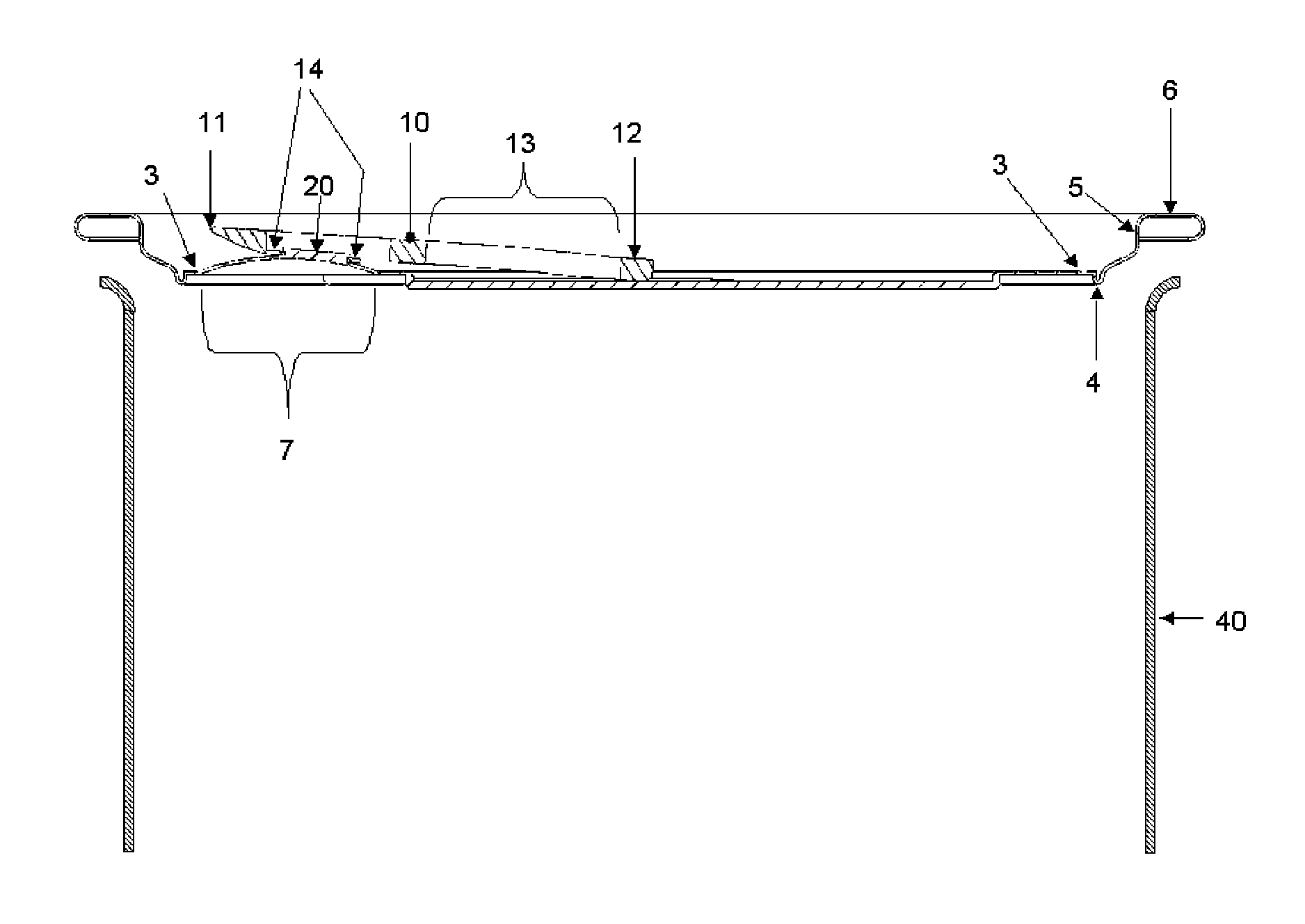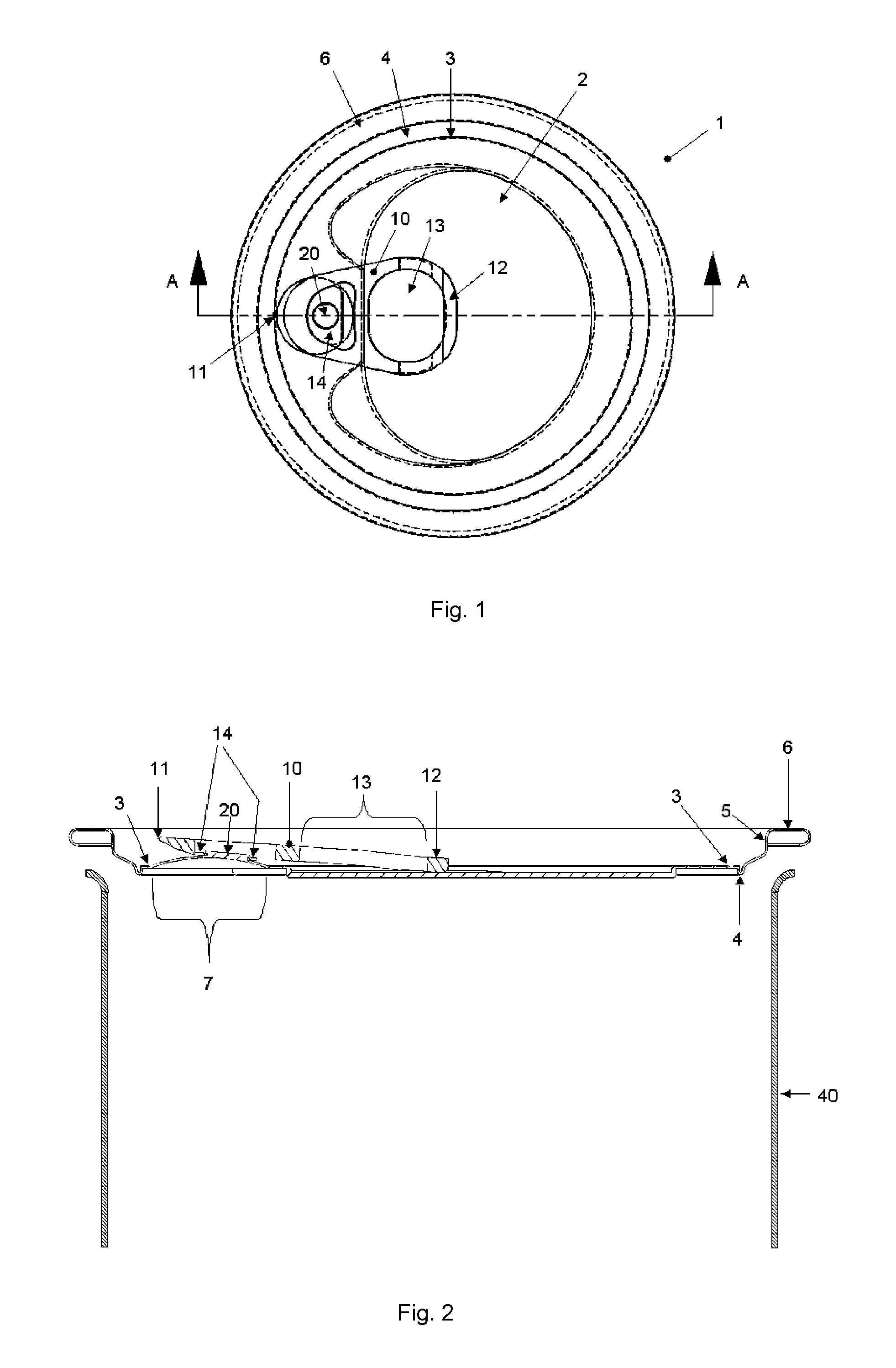Can end
a can end and can end technology, applied in the field of can end, can solve the problems of difficult task, u.s. pat. no. 7 not suitable for large diameter “full aperture", etc., and achieve the effect of convenient opening
- Summary
- Abstract
- Description
- Claims
- Application Information
AI Technical Summary
Benefits of technology
Problems solved by technology
Method used
Image
Examples
Embodiment Construction
[0043]A first embodiment of the invention is shown in FIGS. 1 to 3 and corresponds generally to “Mechanism 1” described above.
[0044]Can end 1 includes an end panel 2 provided with a score line 3 (see FIG. 1). The score line 3 extends continuously about the periphery of the end panel 2 to define a prearranged opening area (in this case, a “full-aperture”). In the embodiment illustrated, the whole of the end panel 2 inwards of the score line is removable from the can end 1. However, in an alternative embodiment, the score line 3 may not be continuous and the portion of the end panel 2 inwards of the score line 3 is retained by the can end; for example, as found on many beverage can ends.
[0045]Returning to the embodiment of FIGS. 1 to 3, the end panel 2 includes a countersink 4 located radially outwards of the score line 3 (see FIGS. 2 & 3). A chuck wall 5 extends first upwardly from the countersink 4, and then outwardly to define seaming panel 6 (see FIGS. 2 & 3). The seaming panel 6 ...
PUM
 Login to View More
Login to View More Abstract
Description
Claims
Application Information
 Login to View More
Login to View More - R&D
- Intellectual Property
- Life Sciences
- Materials
- Tech Scout
- Unparalleled Data Quality
- Higher Quality Content
- 60% Fewer Hallucinations
Browse by: Latest US Patents, China's latest patents, Technical Efficacy Thesaurus, Application Domain, Technology Topic, Popular Technical Reports.
© 2025 PatSnap. All rights reserved.Legal|Privacy policy|Modern Slavery Act Transparency Statement|Sitemap|About US| Contact US: help@patsnap.com



